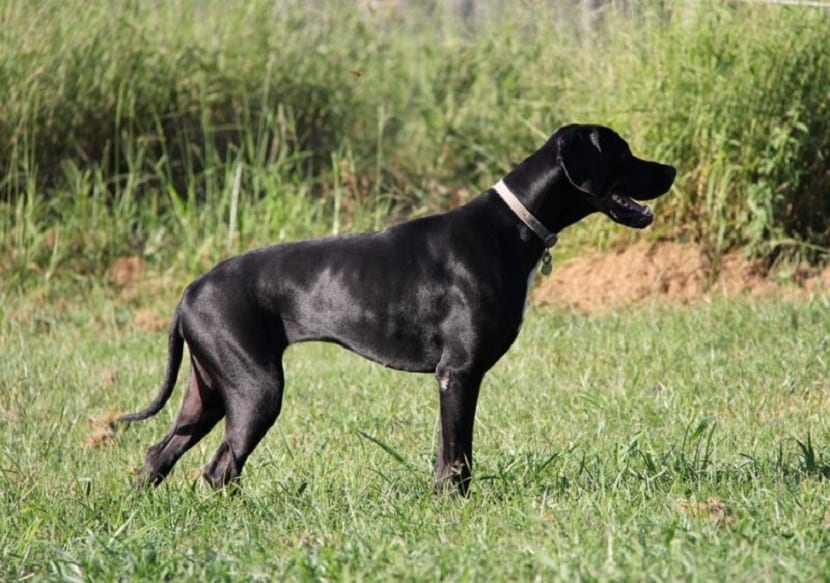
The black pointer is exceptionally showy and athletic. When they are given a minimum of education they become a ideal companion pet and honor the elegance and chivalry of their country of origin. Their past in hunting packs gives this breed peculiar characteristics and is that they are currently evolving positively in their process of inclusion in homes.
English Pointer breed dogs surely gave rise to the belief that the dog is man's best friend. There are varieties of different colors, but the solid black stands out as a thoroughbred among its kind. This energetic pet is extremely friendly and charismatic. The black pointer's energy surpasses his physical abilities and extends to his friendly nature.
Origin of the black pointer
The history of the black pointer shows him as a show dog with excellent performance for work. His background includes the Hispanic Pointing Dog. The most reliable information is provided by William Arkwigth who claims that the breed's ancestors arrived in Britain on board Portuguese fishing boats and traders in the early XNUMXth century.
The standards for the black Pointer are the same as for the breed in general, the only difference is that the pet has no combination or degradation of the total black color of the coat. As for most races, the nineteenth century was fundamental for the determination of standardsThis is achieved through the dedication of multiple breeders. In that century the harmonious and athletic characteristics of the pointer were defined and the unicolor, black and white versions were accepted.
Features
The Black English Pointer is considered a medium-sized breed with a height at the withers between 63 and 69 cm for the male and 61 and 66 cm for the female. Weight varies by gender between 16 and 34 kilos. The body is muscular, lithe and athletic with arched ribs and short flanks. The head-to-tail line features several curves.
The forelimbs are straight and strong with well marked tendons. The carpus is flat in the frontal direction and the pasterns are long, strong and resistant. Hind limbs show well-molded knees with a hock close to the ground with well developed and strong thigh muscles.
The body supports a head with a medium-width skull with dark nose and eyelids especially in black-furred pointers. The muzzle is concave and its termination is at the level of the nose.. The ears are set high, drooping and ending in a point.
The neck is arched and muscular and finally, the tail is medium thick at the straight base and covered with a thick coat of hair. The coat of the black pointer is fine, short and smooth with a unicolor and shiny black tone.. There are pointers in other colors such as lemon, white and orange, and combinations of up to three shades or unicolors, as is the case with the black and white English Pointer.
Temperament and education
The characteristic that stands out the most in the black pointer is its hunting instinct. He is very active and energetic, so he requires a high dose of daily exercise and enjoys being outdoors very much. Their intelligence and common sense make them very easy to educate, and they are extremely accommodating.
The black pointer He is very loving, grateful and quite Sociable. Its friendly nature does not make it a useful watchdog, as noted above, its specialty is hunting.
The education of this breed should always be done with positive reinforcement. They are so appreciative that kind words and some affection work perfectly as positive encouragement. Patience is required to train them and that they follow orders, but once they learn they are very obedient. The first thing they must learn is to respect the limits to prevent their adventurous spirit from leading them to get lost.
Care and hygiene recommendations
This dog is really easy to take care of and does not require special attentionBesides, it is very clean and the main thing you need is a long walk every day or several short ones. If to this you add games where they can sniff and run freely, much better.
Ideally, they should live in the country or near spaces where they can run freely through the prairies. However, they can be adapted to urban areas as long as they have a very active owner that you provide them with constant physical activity. The walks are essential for the physical and emotional balance of the black pointer.
The pointer's hair is short and shiny, very easy to maintain, it only needs a brushing every 3 or 4 days. Of course you will need a bath every six to eight weeks as long as you need it with products for the breed.. Vaccines and parasite control should not be forgotten since they are exposed to the elements. The care of the teeth and ears must be constant. The former are brushed once a day and the ears are checked and cleaned regularly to avoid infection.
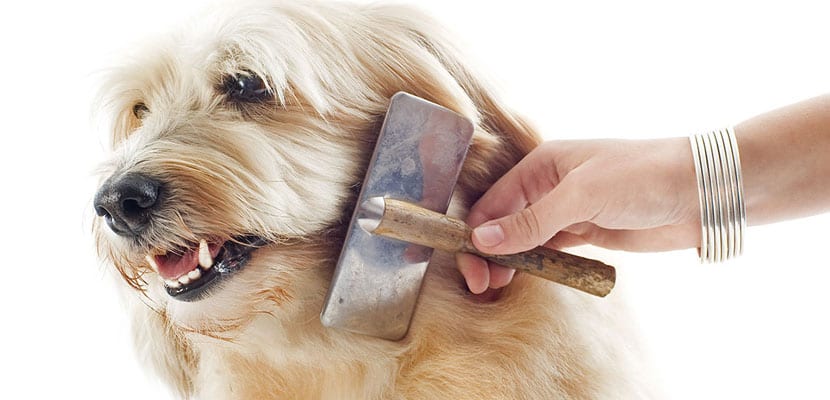
One of the most important aspects in the care of the black pointer is feeding, since these pets like to expend a lot of energy and need to replace it with a feed or diet rich in protein. It is recommended that they have a supply of three daily servings while they are puppies and two as adults.
Of the 100% of daily nutrients, 85% must be protein and the remaining 15% fiber, vitamins and minerals. They should never be given food that is not allowed for dogs such as junk food, treats or anything high in fat or sugar as their digestive system does not metabolize these nutrients properly.
Common health and diseases
The life expectancy of the black pointer dog is 12 to 14 years if it is well cared for. Some of the health problems that the breed can present are epilepsy, hip dysplasia, eye diseases and autoimmune disorders, skin allergies, hypothyroidism, etc.
The most advisable is acquire the black pointer in a professional kennel and be very attentive to the background of the parents. Dysplasia and vision problems can be easily corrected if they are caught and treated early. In the case of epilepsy, with the medications and dose recommended by the veterinarian, you can meet your life expectancy without any problem.
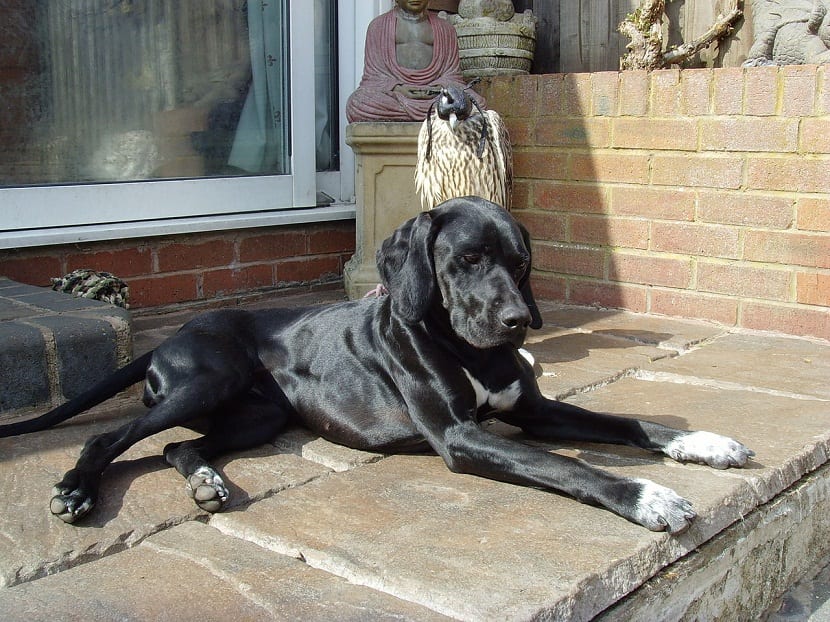
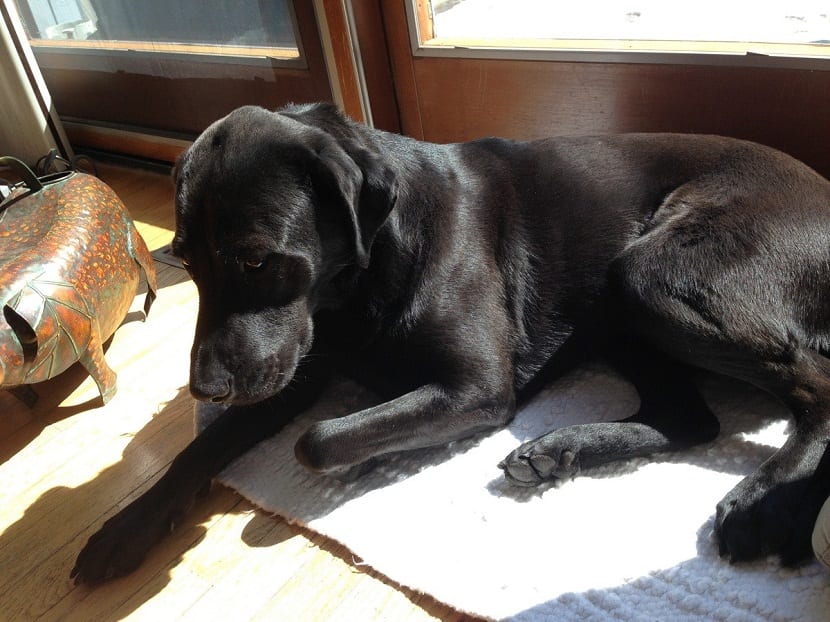
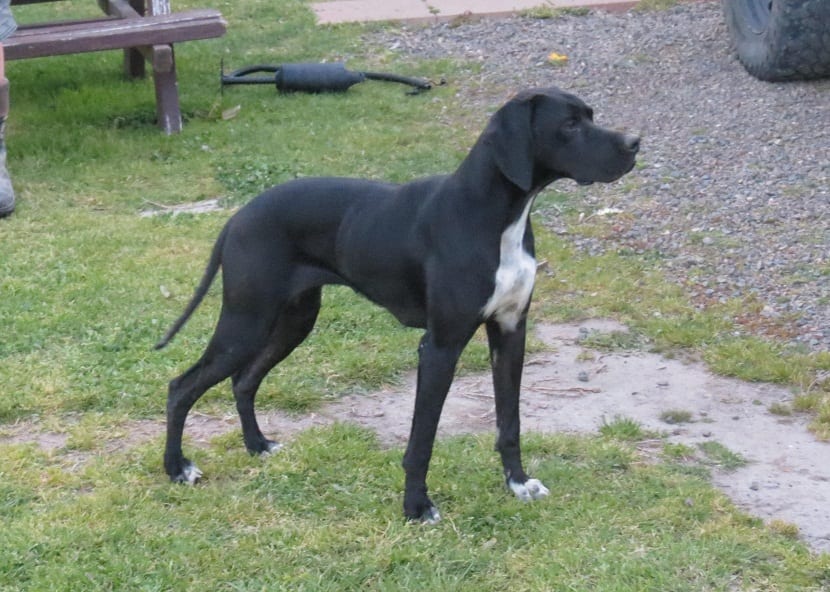
I think my dog is of this breed for sure.
All characteristics define it
Hi, I'm Olga from Barcelona, I have a black Labrador Pointer dog, they gave it to me as a puppy, his name is Jackie, since I was little Jackie has bitten me everything that was put in front of him, he bit everything and barked at all of my family, he only He paid attention to me, when I took him out for a walk and he met other dogs he threw himself to bite, and we decided to call an ethologist, but he did not help me much, when he was 1 year old Jackie became different, he bit me on a finger of my hand, and the first thing the veterinarian and the ethologist told me that the dog had to be euthanized, I didn't want to because I love him so much that I can't stop crying thinking what happens to my dog, searching the internet I found an ethologist who He told me that Jackie had aggressiveness problems, and that he could help me, now Jackie has been around for days, for reasons of life that is very strange, I know that he misses my husband, I hope that Jackie changes because I do not want to sacrifice him, I hope that Can you give me a help so that my dog Jackie changes ,Thank you so much
Hello Olga, as your ethologist has told you, Jackie possibly has a behavior problem, aggressiveness and dominance, from what you tell us. I recommend that you look for another ethologist if he does not inspire you enough confidence. Dog training is something that is slow in these cases and you have to be very constant. Many times it is not about teaching the dog, but about us learning to understand, anticipate and redirect certain inappropriate behaviors of our furry. In addition to going to an ethologist or a dog trainer, you can ask for a second opinion from another veterinarian, many times the points of view are broadened and it ends up hitting the spot. I hope you can get on with Jackie soon. All the best.